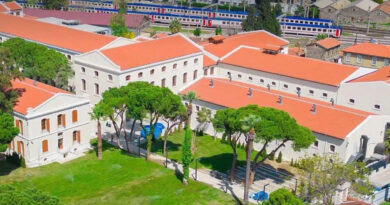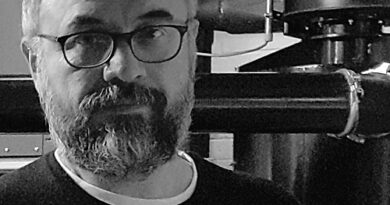gözde yenipazarlı: fluid space of cultural memory / london
GÜLAY YAŞAYANLAR
“London, at the same time, resembles a cultural studio where new-modernist hesitations are subtly calculated and where the ideational ground for passions and future investments are produced. Museums and galleries, where intellectual production is located, are ready to meet the demand for artistic consumption in daily life. An associotional network in which the traces of time and memory are intertwined connects those who visit the city upon different series of indicators.

Gözde Yenipazarlı, “London”, 2013, c-print, Photograph, 100×150 cm. Private Collection.
https://saglamartspace.com/ulusal-sergiler
Gözde Yenipazarlı tends to explore life in London on site and by walking. The photographs that are taken in an attempt to sense a magical city are like the results of an activist movement presenting inter sections of social patterns. At this point, we also need to talk about the content and the density of the life experience that has got stuck in venues, has been source for the urban examples, rotated dynamics of the photographic view and thus is projected on the outcome.
London is primarily the center and object of a theoretical production. It looks like a fluid space that is made of a text, and where energy is in a permanent loop. In this grandiose but controlled stack, life is blended with a culture of artistic density. The intellectual accumulation formed by the unconscious contributions has been transforming either cultural structure or art perception rapidly, besides hinting a stress on power that controls it. The public spaces suggested here host data about the life style and identity of the city. A hegemonic structure is being built and such a structure is stuck between cultural venues, in other words, it embraces all who is inside and outside in a distressing separation.
London, at the same time, resembles a cultural studio where new-modernist hesitations are subtly calculated and where the ideational ground for passions and future investments are produced. Museums and galleries, where intellectual production is located, are ready to meet the demand for artistic consumption in daily life. An associotional network in which the traces of time and memory are intertwined connects those who visit the city upon different series of indicators.
The rush for catching and recording the artistic momentum is actually the experience of being included in the city`s macro cosmos. The city that has become sensitive for humans and their reactions, with its secretly deepening interactive nature, resembles a large museum that has been transformed into a traumatic body. Moreover, while future is being planned due to the nature of the cultural competition, it creates panic to see the increasing frequency of fictions about parodical presentations (as a marketing strategy) that sets aside the contemporary discussions within the optimism of cultural programs.
In London, people actually confront with post-capitalist situations. While especially looking for things to meet their cultural expectations, they witness discussions about metropolitan industrial investments. For this reason, the relationship between ecological pattern and artistic and cultural structure has come into prominence as a problematic field, thus social activities and recreation areas have been subtly planned. Mental programs prepared for each day in accordance with the demands related to London`s demoghraphic structure progress as efficiently as it was never before. It feels like some sort of cultural engineering, which estimates the quality of the culture consumed in intermediate places and times, works. This city hosts important discussions in which urban contributions are problematized upon projects about consumed art due to the differences in the cosmopolitan structure.
In London, where intellectual production and morals become more aestheticized day by day, the artistic foresight on the formation of the endeavored production has gained importance as a design problematic or a solid fact. Historical and institutional discussions that remind conflicting situations for industrial reasons and endeavor processes have still been significant as the base of constantly changing cultural memory. It is quite provoking for new questions: yes, is it possible to make a desire map for London? Does the problematic that arises between things we see formally and the reality of London respond to different demands? In other words, is it enough to develop some sort of sensitivity to evaluate the city within sub-dynamics that stem from venues, objects, happenings and situations? Is it possible to estimate London`s future and what kind of changes could be experienced? For example, is there a text about London`s reality that is already fair enough? Isn`t it paradoxical that Oscar Wilde, Bernard Shaw, Virginia Woolf or George Orwell’s London is now an information or an ideal platform only accessible to a qualified group of people of mental endeavor and social class who doesn`t have a voice over society anymore? Maybe this is why London, commodifying young Royal Academy artists, looks in an attempt to find itself in -so to speak- William Turner`s misty and blurred storms.
Additionally, will such a distancing sense of emptiness that occurs in inverse proportion with the increase of sensations between the individual and the city turn into a problem? While new cultural responsibility suggests owning Damien Hirst`s sculpture, we will see what kind of response will be given to the radical change in public spaces (let`s remember Shard example.)
Consequently, London, where cultural hierarchy keeps consolidating, continues to be the erotic place for people`s desire for love with the scent of magnolia and lilies in the green. Here, time that is hurled with selected special imagery sustains the touristic importance of new representation strategies changing living areas. This is why we shouldn`t be surprised by the identicalness of the psychic sanctions and such representations that utilize red intended for invading the unconscious.
Izmir-London, November 2017
Copyright © Gülay Yasayanlar 2017, All rights reserved.
(Gülay Yaşayanlar; “Fluid Space of Cultural Memory”, Translation: Ozan Atalan, Gözde Yenipazarlı / Walking Anywhere, NG Art Gallery Press, İzmir 2018.
ayrıca bakınız: https://saglamart.com/gozde-yenipazarli



